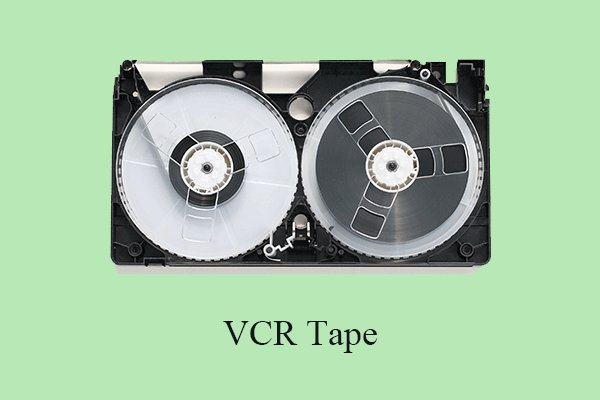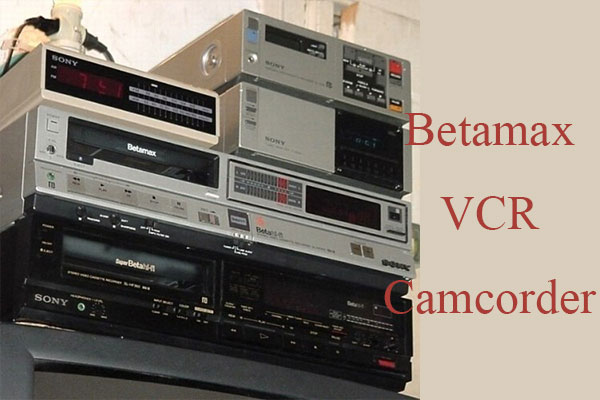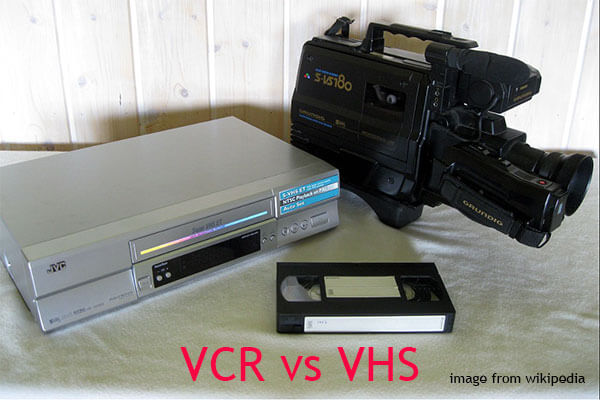In this article offered by MiniTool video converting app, we delve into the history, significance, and enduring legacy of the VCR player, exploring its evolution from a novel invention to a cherished piece of pop culture history.
In the rapidly evolving landscape of home entertainment, few devices have left as profound an impact as the VCR player. The mere mention of a VCR player evokes a sense of nostalgia, conjuring images of bulky machines, magnetic tapes, and the thrill of recording and watching beloved movies and TV shows at our own leisure.
What is a VCR Player & What Does a VCR Do?
A VCR player, or Video Cassette Recorder, is an electronic device designed to play and record audiovisual content on videocassette tapes. It allows users to watch prerecorded tapes, as well as record TV shows and movies for later viewing. The VCR player brought a revolution to home entertainment, providing unprecedented control over what, when, and how we consumed media.
When Did VCR Come Out?
When was the VCR invented? The VCR emerged in the late 1950s and early 1960s as an ingenious invention that would forever change the way we consumed television and movies. Developed by multiple companies simultaneously, the VCR allowed households to record television broadcasts onto magnetic tapes, enabling viewers to watch their favorite shows at their convenience.
VCR Player for Sale
In the early days, VCR players were a luxury, but their popularity surged in the 1980s as prices became more accessible. Renowned brands like Panasonic, Sony, JVC, RCA, and more introduced their own VCR models, each boasting unique features and designs. These devices became a staple in living rooms around the world, and the VCR craze reached its peak during this era.
VCR Evolution: From Analog to Digital
The VCR player continued to evolve throughout the years, with advancements in technology leading to the introduction of features like High-Definition Multimedia Interface (HDMI) ports for improved video and audio quality. These modern iterations allowed users to connect their VCR players to contemporary high-definition televisions, bridging the gap between vintage and modern technology.
VCR’s Enduring Legacy
While the VCR player’s popularity eventually waned with the advent of digital streaming services and DVD players, its impact on entertainment culture remains undeniable. The VCR era symbolizes a time when families gathered around the television, eagerly inserting tapes and sharing communal viewing experiences. Moreover, the VCR democratized content consumption, empowering individuals to curate their own entertainment schedules.
Where to Buy a VCR?
While VCR players are no longer the primary means of watching media, their legacy endures. Collectors, enthusiasts, and individuals seeking a touch of nostalgia continue to cherish and maintain these vintage devices. Though you may not find VCR players on store shelves today, dedicated collectors’ markets, online auctions, and secondhand stores offer opportunities to acquire these time capsules of entertainment history.
VCR Price: The Price of Nostalgia
In the 1980s, the cost of a VCR player varied based on brand, features, and technology. Basic models were initially quite expensive, often exceeding $1,000. However, as competition increased and manufacturing processes improved, prices gradually dropped. By the mid-1980s, consumers could purchase a VCR player for around $300 to $500, making them more accessible to a wider audience.
Conclusion
The VCR player stands as a remarkable testament to the power of innovation and its enduring impact on our cultural landscape. From its humble beginnings to its widespread adoption and eventual transformation, the VCR player has left an indelible mark on the way we experience and interact with media. While its heyday has passed, the memories, experiences, and entertainment it provided continue to resonate, reminding us of a simpler time when pressing “play” on a cassette marked the beginning of a cinematic journey.
Also Read
- Betamax Player Review: History, Pros & Cons, Competitors, and Purchase
- The Betamax Movie Legacy: Nostalgia, Collectibles, and Lasting Memories
- Before Betamax and VHS: Exploring the Predecessors of Home Video Recording
- Converting Betamax to Digital: Preserving Your Memories for the Digital Age
- [Solved] How to Convert VHS to Digital to Keep Your Old Memories?





User Comments :